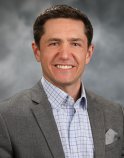Shaw Interviewed for 'News & Observer' Article
Ryan Shaw, associate professor, was highlighted a "The News & Observer" article.
 Ryan Shaw, associate professor, was highlighted in "The News & Observer" article, "Thousands of nurses are hurt lifting hospital patients. Can a Durham startup help?," by Zachery Eanes. Shaw is also the director of the Health Innovation Lab.
Ryan Shaw, associate professor, was highlighted in "The News & Observer" article, "Thousands of nurses are hurt lifting hospital patients. Can a Durham startup help?," by Zachery Eanes. Shaw is also the director of the Health Innovation Lab.
Excerpt
Every year tens of thousands of nurses and other hospital employees across the U.S. injure themselves moving bedridden patients.
It’s such a common occurrence that nursing is a leading occupation for back injuries. Nurse assistants and orderlies, in fact, are three times more likely to suffer back injuries than construction workers, according to an NPR analysis of U.S. Bureau of Labor Statistics data.
The injuries cost hospitals tremendously and can lead to workers leaving the industry entirely. One estimate found that workplace injuries to workers cost the health care industry $13.1 billion and more than two million lost work days in 2011 alone.
The challenge of moving patients might only increase, too, as obesity rates continue to rise. Around 42.5% of American adults over the age of 20 are considered obese, a number that has increased significantly in the past few decades, according to the Centers for Disease Control and Prevention.
That means hospital patients, many of whom are already unhealthy, are getting larger as well. It’s not uncommon to find patients weighing over 300 pounds and significantly smaller nurses having to move them.
A young Durham medical device startup believes it can help eliminate some of these injuries.
Seneca Devices, founded in 2017 by then-Duke University undergraduate Samuel Fox, is introducing a device that can boost and rotate patients at the simple press of a button.
Devices that assist the lifting of patients already exist on the market, but Seneca’s device, called EasyShift, offers a simple approach with few steps, as opposed to some machines that require many steps and the help of several employees.
EasyShift attaches directly to a patient’s bed and mattress. It sends air up and down the mattress that both boosts a patient in bed and rotates them to their sides. The use of air and a fabric that reduces shear helps prevent abrasions caused by movement, an important element as elderly patients can have very thin skin, Fox said.